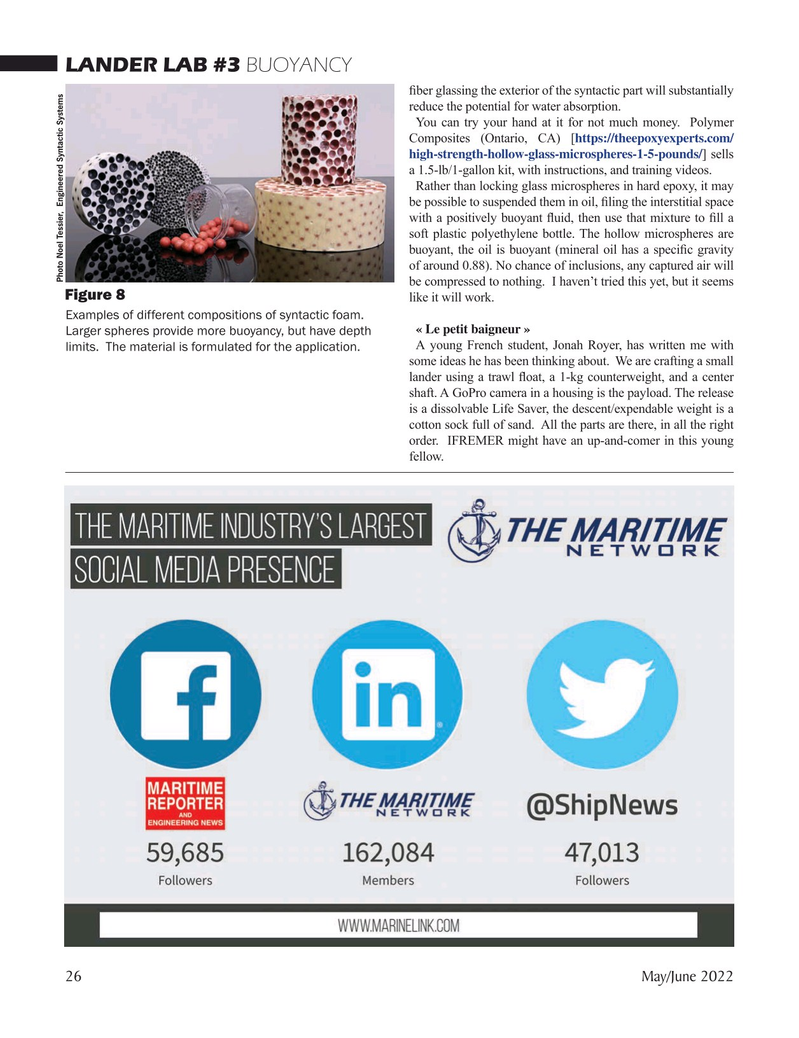
Page 26: of Marine Technology Magazine (May 2022)
Read this page in Pdf, Flash or Html5 edition of May 2022 Marine Technology Magazine
LANDER LAB #3 BUOYANCY ? ber glassing the exterior of the syntactic part will substantially reduce the potential for water absorption.
You can try your hand at it for not much money. Polymer
Composites (Ontario, CA) [https://theepoxyexperts.com/ high-strength-hollow-glass-microspheres-1-5-pounds/] sells a 1.5-lb/1-gallon kit, with instructions, and training videos.
Rather than locking glass microspheres in hard epoxy, it may be possible to suspended them in oil, ? ling the interstitial space with a positively buoyant ? uid, then use that mixture to ? ll a soft plastic polyethylene bottle. The hollow microspheres are buoyant, the oil is buoyant (mineral oil has a speci? c gravity of around 0.88). No chance of inclusions, any captured air will
Photo Noel Tessier, Engineered Syntactic Systems be compressed to nothing. I haven’t tried this yet, but it seems
Figure 8 like it will work.
Examples of different compositions of syntactic foam. « Le petit baigneur »
Larger spheres provide more buoyancy, but have depth
A young French student, Jonah Royer, has written me with limits. The material is formulated for the application. some ideas he has been thinking about. We are crafting a small lander using a trawl ? oat, a 1-kg counterweight, and a center shaft. A GoPro camera in a housing is the payload. The release is a dissolvable Life Saver, the descent/expendable weight is a cotton sock full of sand. All the parts are there, in all the right order. IFREMER might have an up-and-comer in this young fellow. 26 May/June 2022
MTR #4 (18-33).indd 26 4/29/2022 8:33:31 AM

 25
25

 27
27
